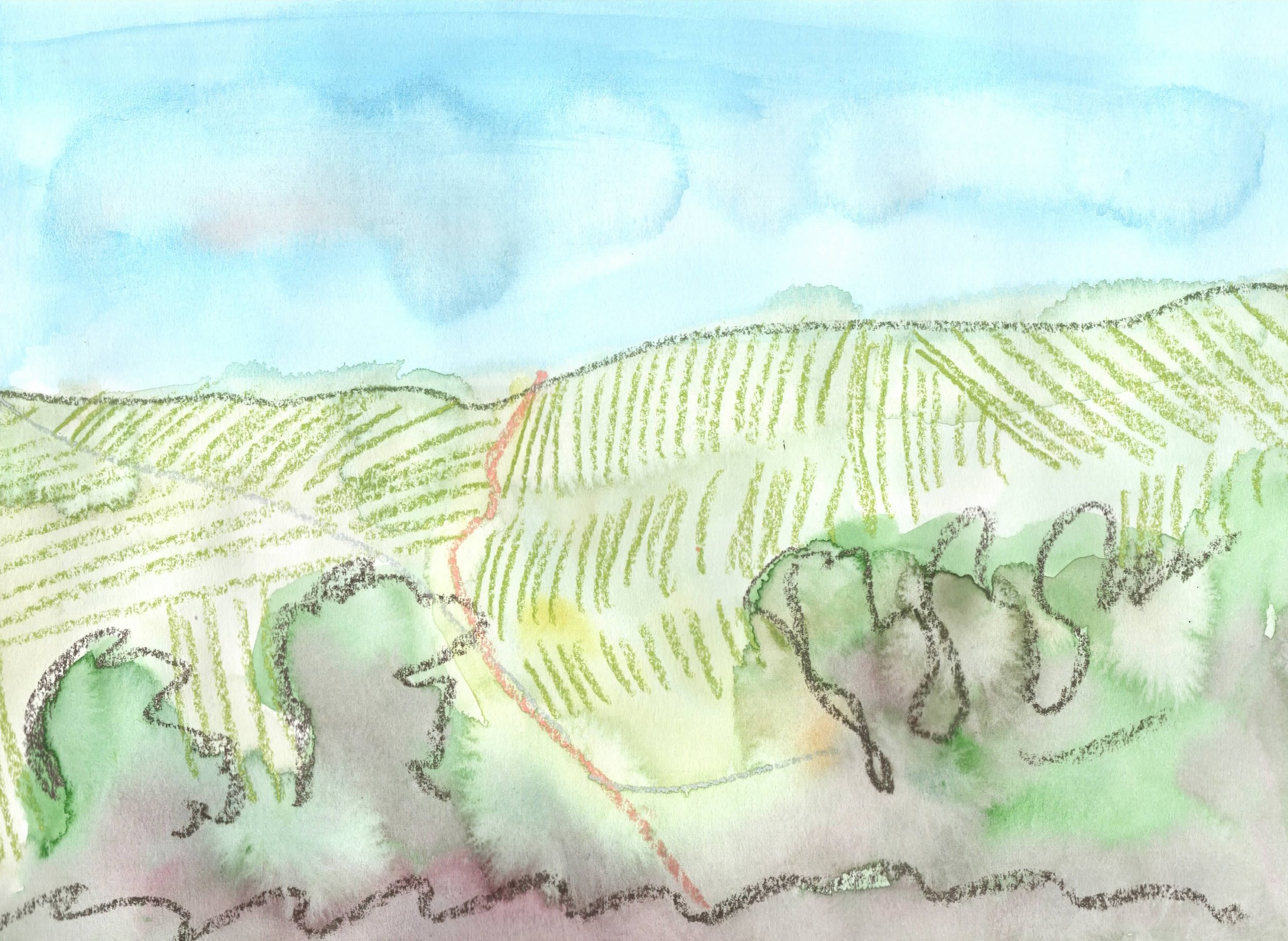REGIONS
Beaujolais has gone through an incredible renaissance in the last years and whilst we still have a soft spot for Beaujolais Nouveau and all the celebration that entails, we are pleased that this region is finally getting the recognition it deserves for making top-quality, age-worthy wines. Made up of nine crus, this region can create a diverse style of wines; from fragrant and floral to deep and muscular and everything in between.
Beaujolais
Moving into the southern reaches of Burgundy - sandwiched between the Côte de Beaune in the north and the Mâconnais in the south - this area is made up of five key communes: Bouzeron, Rully, Mercurey, Givry and Montagny. There is a notable change as we leave the limestone escarpment of the Côte d’Or where the vines are planted throughout and head into an area with vineyards intertwined with meadows and other farming. Limestone is still important but it is more sporadically spread throughout. It is good to note that the village of Bouzeron is the only appellation in Burgundy which is solely for aligoté.
Stretching from the village of Marsannay in the north to Nuits-Saint-Georges in the south, this narrow strip of land makes up the northern reaches of the Côte d’Or, as well as being home to a host of Burgundy’s most celebrated red wines. This incredibly small region- 24 km in length and 3.2 km in width - is also home to 24 of Burgundy's 33 grand cru appellations.
Côte de Nuits
This little-known region sits in the heartland of France with the closest major city being Clermont-Ferrand. Whilst there is incredibly diverse topography in the Auvergne, it is known for its ancient volcanic ranges and subsequent altitude, with most vineyards sitting between 400m - 500m. It is a great region to source fresh and affordable expressions of chardonnay, gamay and pinot noir.
Auvergne
California is by far the largest and most influential wine region in the USA, producing over 80% of the country’s wine. With such a vast range of topography from mountains, coastlines, valleys and hundreds of miles from north to south and east to west, it is almost impossible to sum up this region in just a few sentences.
California
Chablis & Grand Auxerrois: Saint-Bris
& Vézelay
The northern reaches of Burgundy are encapsulated within the Grand Auxerrois. Without a doubt the most famous within this area is Chablis but it is definitely worth being familiar with the neighbouring villages which can create stylistically similar whites, such as in Vézelay, and Chablisien-esque reds, such as in Epineuil.
Côte Chalonnaise
Famed for producing some of the most famed and long-lived white wines in Burgundy, as well as a handful of the top reds, this narrow strip of lands makes up the most southerly reaches of the Côte d’Or. Sitting just beneath the Côte de Nuits, this escarpment is just 5 kms wide and 25 kms long and is treasured for its limestone-rich soils and almost perfect south/south-easterly facing vineyards.
Côte de Beaune
Our look at Southern France encapsulates the expanse of the Occitane, starting with Cahors - which sits somewhere between Bordeaux and Montpellier - and is known for its deep inky reds made from Malbec (Côt) and Merlot. Next we head into the depths of the Roussillon, nearing the Spanish border for a spot of vertiginous winemaking in Calce, before heading eastwards in the mountains to the Minervois which is famous for its structured yet ethereal reds which have a strong hold in Cinsault. Leaving the wild expanse of the Roussillon, we travel east to the hills of Provence, notably the high plateau that makes up Coteaux Varois en Provence, and the beating heart of pale-pink, delicately scented rosé.
Southern France
The Loire Valley is a deceivingly large region, spanning from the Atlantic Coast, inland towards Burgundy before dropping deep into central France. In this sense it is hard to summarise but it is the proud heartland of Sauvignon Blanc and Chenin Blanc, as well Romorantin, Muscadet, Pinot Noir and Gamay.
Loire
This is the most southerly outpost of Burgundy, before finally moving into Beaujolais. The region has gained popularity for its affordable styles of Chardonnay (about 75% plus of its production) that express a more ripe and fruity quality owing to the abundance of sunshine and the increased impact of the Mediterranean. The best vineyards lie close to the Saône river and benefit from easterly and south easterly exposure. As we reach further south, the limestone and clay rich soils begin to incorporate more pockets of granite, which is where you will often find Gamay planted.










